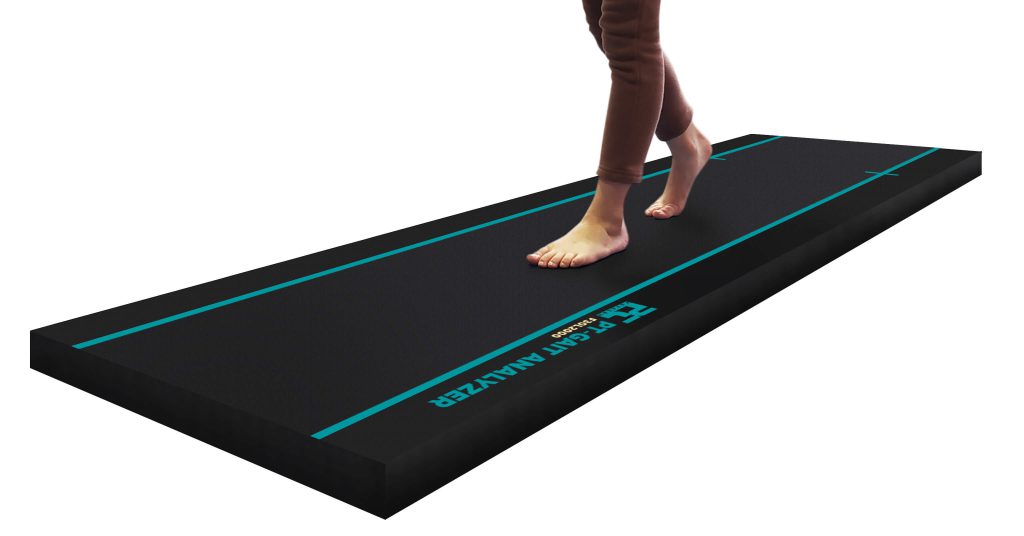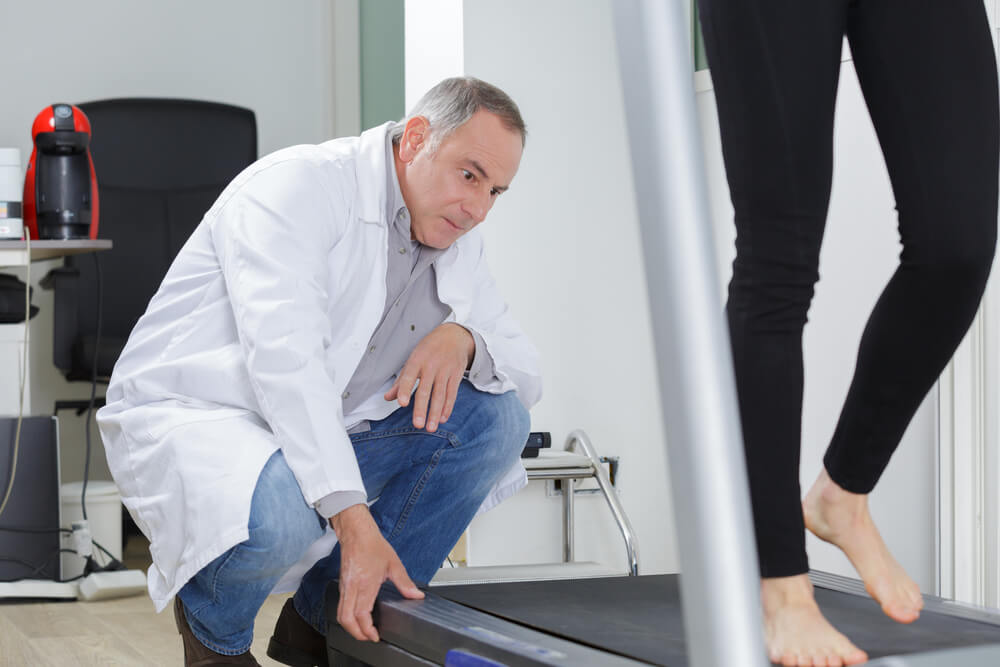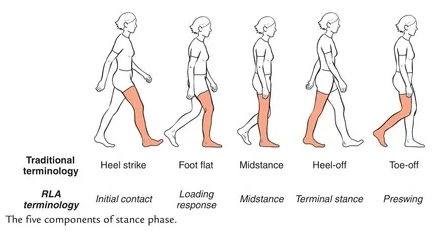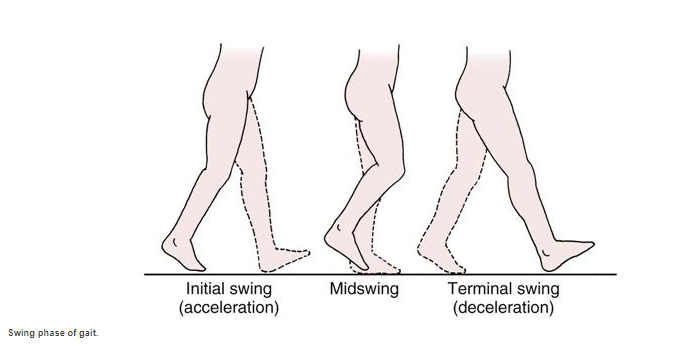Gait, or walking pattern, is the way one takes steps and walks from one place to another; in other words, it is the manner or style of walking. Gait analysis is a set of tests designed to provide a comprehensive assessment of a person’s gait. It is a systematic study of human motion that involves observation and the use of instruments to measure body movements, muscle activity, and body mechanics. Its purpose is to detect any abnormalities in locomotion. In the past, this job was done by a healthcare practitioner’s observation of a person’s gait cycle. This type of gait analysis lacked the accuracy needed to identify all gait impairments. Today it is done by accurate instruments such as gait analyzers.

What is normal gait?
Normal gait is a series of rhythmical, alternating movements of the trunk and limbs that results in the forward progression of the center of gravity. It is characterized by a smooth, coordinated, and efficient stride, allowing individuals to walk with ease and maintain balance.
What is abnormal gait?
An abnormal gait or walking abnormality occurs when a person is unable to move normally. Causes, such as injuries, joint pains, basic movement issues, abnormalities of the skeletal system, or defects in the lower legs and feet, can lead to this.
The Importance of Gait Analysis
Gait analysis is important for detecting musculoskeletal issues, assessing functional movement, evaluating fall risk, monitoring treatment progress, identifying neurological conditions, and providing personalized rehabilitation. It helps healthcare professionals gain a deeper understanding of an individual’s physical health, enabling them to develop targeted interventions to optimize mobility and overall wellbeing.
Having a gait analysis done can be an excellent way to reduce daily pain, regardless of whether one is an athlete or not. It will pick up on issues with one’s stride, unusual head or arm position, and any other issues present in one’s walking patterns. Furthermore, if one is an athlete, this analysis can help them find the foot orthotics, right shoes, and exercise routine to keep their body in peak condition.
Benefits of gait analysis
The other areas in which it has advantages include:
1. Physical therapists can tell a lot about you from your gait. Muscle weakness, range of motion limitations, balance deficits, and posture can all be apparent from the way you walk. Importantly, gait can also be an indicator of increased fall risk and certain neurological conditions, so you can see how important it is. Unfortunately, it is often undervalued and not assessed thoroughly enough.
2. Rehabilitation and Treatment: Gait analysis plays a crucial role in the rehabilitation process. It helps healthcare providers develop tailored treatment plans for individuals recovering from injuries or undergoing physical therapy. Therapists can identify specific areas of weakness and implement appropriate exercises or interventions to improve function by assessing gait mechanics.

3. Performance Enhancement: Gait analysis is not only limited to injury prevention and rehabilitation; it is also valuable for optimizing athletic performance. Trainers and coaches can identify inefficiencies or areas for improvement by analyzing an athlete’s gait and then develop targeted training programs to enhance efficiency, power, and speed, leading to improved performance in sports and athletics.
4. Orthotic and Prosthetic: Gait analysis plays a critical role in ensuring proper fit and functionality for individuals requiring orthotic or prosthetic devices. Healthcare professionals can design and customize these devices by assessing gait mechanics, which leads to improved mobility, comfort, and overall quality of life.
5. Research: Gait analysis serves as a foundation for research in fields such as biomechanics, rehabilitation sciences, and sports medicine. Gait analysis continues to contribute to our better understanding of human movement, leading to innovations in treatment techniques, device design, and rehabilitation strategies through ongoing studies and advancements in technology.
The Gait Cycle
The gait cycle consists of two main phases: the stance phase and the swing phase. These phases are further divided into specific subphases. Here is an overview of the phases of gait:
Stance Phase
a. Heel Strike (Initial Contact): The foot makes initial contact with the ground, typically landing on the heel.
b. Foot Flat: The entire foot comes in contact with the ground, providing stability and weight-bearing support.
c. Midstance: The body weight is centered over the stance limb, and the foot is positioned directly under the body.
d. Heel Offs: The heel begins to lift off the ground, preparing for the transition to the swing phase.
e. Toe Off: The toes push off the ground, propelling the body forward.

Swing Phase
a. Initial Swing: The limb moves forward in preparation for the swing phase, with the foot clearing the ground.
b. Midswing: The limb continues to swing forward, reaching its maximum forward position.
c. Terminal Swing: The limb prepares for the heel strike of the next gait cycle, starting to slow down.

These phases of gait allow for a proper and coordinated walking pattern, with one foot in the stance phase while the other is in the swing phase. The timing and duration of each phase can vary depending on factors such as walking speed, individual biomechanics, and specific gait abnormalities or injuries.
It’s important to note that there may be slight variations in the terminology or subphases used to describe the gait cycle, as different sources and professionals may use slightly different terminology. However, the basic concept of the stance and swing phases remains consistent across gait analysis.
What are the factors affecting gait pattern and analysis?
There are several factors that can impact a person’s gait, and it is crucial to consider these for an accurate gait analysis.
Gender, age, height, and weight can all influence the way a person moves. Men and women often have different gait patterns, and as people age, their structure and movement may change. Additionally, excessive weight or body composition can affect posture and gait mechanics.
Footwear and clothing: The type of shoes worn and the clothing choices can affect gait. Improper footwear, such as shoes that are too tight, too loose, or lack adequate support, can alter gait mechanics. Similarly, clothing that restricts movement can impact the natural walking pattern.
Ground and environmental factors: The surface or ground on which a person is walking can influence their gait. Uneven surfaces, slopes, stairs, or slippery conditions can affect balance, stride length, and overall gait quality. Additionally, carrying items such as bags or backpacks can lead to changes in posture and gait mechanics.
Physiological factors: Individual physiological factors, including body proportions and joint mobility, can affect gait. These factors can influence stride length, cadence, and overall biomechanics during walking.
Psychological factors, such as a person’s mental state, emotions, stress levels, and personality traits, can influence gait. Anxiety, fear, or distractions may result in altered gait patterns or cautious movements.
Pathological factors: Underlying health conditions or pathologies, such as neurological diseases, psychiatric disorders, previous traumas, or musculoskeletal anomalies, can significantly impact gait. These conditions may lead to muscle weakness, impaired balance, altered joint mechanics, or compensation patterns while walking.
Considering these factors during gait analysis ensures a comprehensive evaluation and provides valuable insights into an individual’s unique gait characteristics.
Conclusion
Gait analysis is a thorough evaluation that looks beyond basic walking patterns. Its importance lies in its ability to identify neurological abnormalities, provide individualized therapy, monitor treatment progress, assess fall risk, and detect musculoskeletal problems. We can improve our general health, athletic performance, and quality of life for those with particular needs by recognizing the significance of gait analysis and its various applications.

 فارسی
فارسی